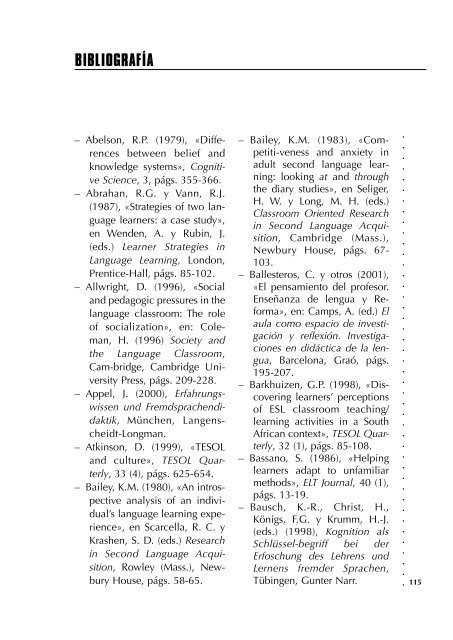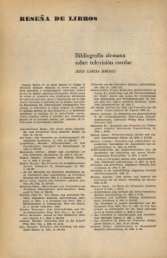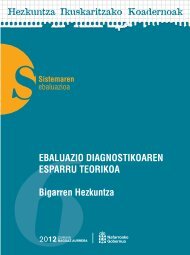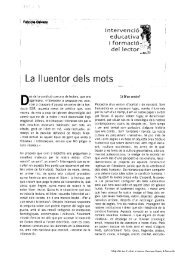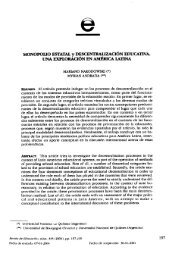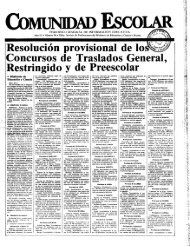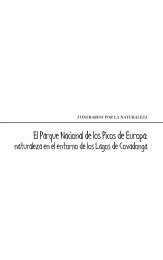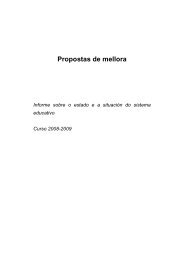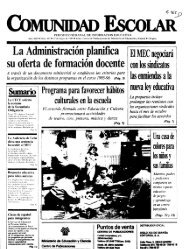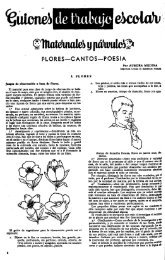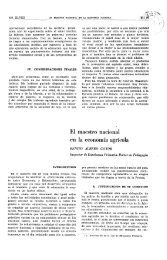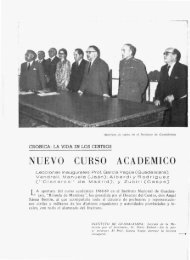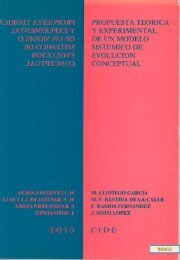dimensiones individuales y culturales
dimensiones individuales y culturales
dimensiones individuales y culturales
You also want an ePaper? Increase the reach of your titles
YUMPU automatically turns print PDFs into web optimized ePapers that Google loves.
BIBLIOGRAFÍA<br />
– Abelson, R.P. (1979), «Differences<br />
between belief and<br />
knowledge systems», Cognitive<br />
Science, 3, págs. 355-366.<br />
– Abrahan, R.G. y Vann, R.J.<br />
(1987), «Strategies of two language<br />
learners: a case study»,<br />
en Wenden, A. y Rubin, J.<br />
(eds.) Learner Strategies in<br />
Language Learning, London,<br />
Prentice-Hall, págs. 85-102.<br />
– Allwright, D. (1996), «Social<br />
and pedagogic pressures in the<br />
language classroom: The role<br />
of socialization», en: Coleman,<br />
H. (1996) Society and<br />
the Language Classroom,<br />
Cam-bridge, Cambridge University<br />
Press, págs. 209-228.<br />
– Appel, J. (2000), Erfahrungswissen<br />
und Fremdsprachendidaktik,<br />
München, Langenscheidt-Longman.<br />
– Atkinson, D. (1999), «TESOL<br />
and culture», TESOL Quarterly,<br />
33 (4), págs. 625-654.<br />
– Bailey, K.M. (1980), «An introspective<br />
analysis of an individual’s<br />
language learning experience»,<br />
en Scarcella, R. C. y<br />
Krashen, S. D. (eds.) Research<br />
in Second Language Acquisition,<br />
Rowley (Mass.), Newbury<br />
House, págs. 58-65.<br />
– Bailey, K.M. (1983), «Competiti-veness<br />
and anxiety in<br />
adult second language learning:<br />
looking at and through<br />
the diary studies», en Seliger,<br />
H. W. y Long, M. H. (eds.)<br />
Classroom Oriented Research<br />
in Second Language Acquisition,<br />
Cambridge (Mass.),<br />
Newbury House, págs. 67-<br />
103.<br />
– Ballesteros, C. y otros (2001),<br />
«El pensamiento del profesor.<br />
Enseñanza de lengua y Reforma»,<br />
en: Camps, A. (ed.) El<br />
aula como espacio de investigación<br />
y reflexión. Investigaciones<br />
en didáctica de la lengua,<br />
Barcelona, Graó, págs.<br />
195-207.<br />
– Barkhuizen, G.P. (1998), «Discovering<br />
learners’ perceptions<br />
of ESL classroom teaching/<br />
learning activities in a South<br />
African context», TESOL Quarterly,<br />
32 (1), págs. 85-108.<br />
– Bassano, S. (1986), «Helping<br />
learners adapt to unfamiliar<br />
methods», ELT Journal, 40 (1),<br />
págs. 13-19.<br />
– Bausch, K.-R., Christ, H.,<br />
Königs, F.G. y Krumm, H.-J.<br />
(eds.) (1998), Kognition als<br />
Schlüssel-begriff bei der<br />
Erfoschung des Lehrens und<br />
Lernens fremder Sprachen,<br />
Tübingen, Gunter Narr.<br />
.<br />
.<br />
.<br />
.<br />
.<br />
.<br />
.<br />
.<br />
.<br />
.<br />
.<br />
.<br />
.<br />
.<br />
.<br />
.<br />
.<br />
.<br />
.<br />
.<br />
.<br />
.<br />
.<br />
.<br />
.<br />
.<br />
.<br />
.<br />
.<br />
.<br />
.<br />
.<br />
.<br />
.<br />
.<br />
.<br />
.<br />
.<br />
.<br />
.<br />
.<br />
.<br />
. 115


